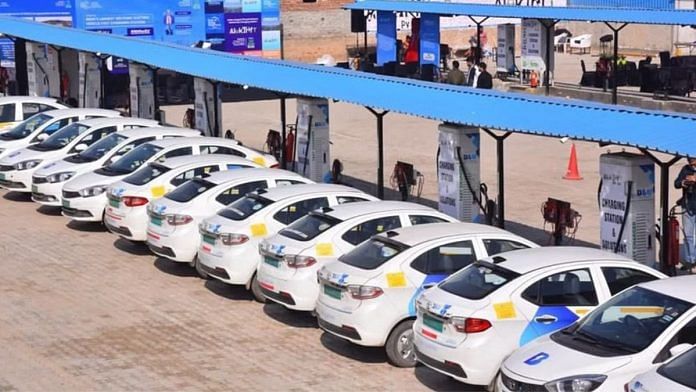Electric vehicles have been in the news for all the right reasons in India. This new and emerging segment crossed the ‘one million vehicles registered’ mark in 2022. While the fast-paced growth of this segment gives us much to celebrate, it is not yet time for governments to take their foot off the subsidy pedal. India has the chance to emerge as a viable contender in the EV market, and that will mean stepping up EV policies.
Some of the more advanced EV markets in the world have grown this segment over the last few years using policies and consumer incentives. The US recently introduced varying tax credits to EVbuyers. The European Union (EU) depends on purchase subsidies, with France most recently increasing its EV bonus to Euro 7,000 per vehicle. In addition to this, countries have also used scrapping incentives and tariff shields on energy prices to indirectly boost this segment. Norway was among the first to introduce purchase subsidies back in 1990, building on several exemptions and incentives to reach net zero by 2025, and as a result, its EV market share in 2022 was 80 per cent. China, on the other hand, has halted its EV subsidy, which first came into effect in 2010 and has grown the market considerably in the last decade.
India has sold more than 21 lakh EVs to date, of which more than 10 lakh have been sold in 2022 itself. However, the penetration of EVs in the auto market is still at a nascent stage. The 10.09 lakh EVs sold in 2022 formed only 4.7 per cent of all vehicles sold in the country. A recent study by the Council on Energy, Environment and Water’s (CEEW) Centre for Energy Finance (CEF) found that states that subsidised EVs saw a market growth that was twice as much as states that did not. So far, 16 states have released their consumer-facing EV policies, with Punjab most recently coming out with its policy in February 2023.
Also read: The Lithium found in Jammu can fuel India’s green ambitions, cut China dependence
Subsidies help EV sales in India
India’s EV movement has been led by electric two-wheelers, which formed 62 per cent of all EVs sold in 2022. Invariably, this segment has also been the largest beneficiary of government policy support. Policies at both the national and state level that provide purchase incentives to electric-two wheelers have been instrumental in bringing down costs for this category. This support is essential as price remains the primary pain point for buyers.
So, just how effective has policy support been in driving EV volumes? More than 90 per cent of all electric two-wheelers sold in India since FY20 have been subsidised by the FAME II scheme. Our study also finds that states that provided higher consumer incentives, up to Rs 10,000/ kWh for electric two-wheelers, saw their volumes grow approximately five times more than states that provided lower incentives of up to Rs 5,000/ kWh for e-2Ws.
Also read: Hyundai’s IONIQ5 — the smart-looking SUV is competitively priced & has solid regeneration
How to grow the EV market
First, make electric vehicles more affordable through policy instruments. Policies, across all levels, are instrumental in reversing the inherent price disadvantage of EVs. States without EV policies and incentives must seriously consider introducing these to better grow their EV markets, while states whose policies may soon expire, such as Delhi and Kerala, should consider renewing them.
Second, promote EVs by making petrol and diesel vehicles less attractive. Countries worldwide have achieved this via stricter vehicle emissions norms or green taxes, effectively disincentivising the purchase of ICEVs (internal combustion engine vehicles). Delhi has resorted to using the former from time to time to control its spiralling pollution levels, the temporary ban on all diesel BS-IV vehicles in the city being the latest one. Such restrictions, across many more Indian states, could pave the way toward a cleaner and greener vehicle fleet over the next few years.
And finally, the Narendra Modi government must set a national target for electric vehicles in India. This will provide much-needed direction to both India’s automotive industry and states for the next few decades.
As the third-largest auto market in the world, India has the opportunity to be one of the more prominent leaders of the global EV transition. Policymakers at the national and state level must continue to support this growing segment in sentiment and through subsidies, both.
Meghna Nair @Meghna2297 and Apoorv Minocha @ApoorvMinocha are Research Analysts at the Council of Energy, Environment and Water (CEEW), an independent not-for-profit research organisation. Views are personal.
(Edited by Anurag Chaubey)



